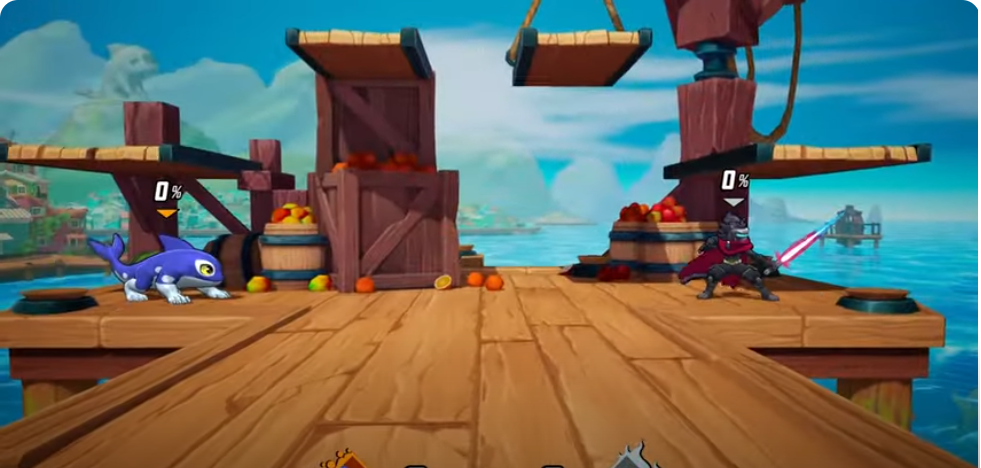Gaming
Orcane Guide for Rivals 2

This guide covers Orcane, a tricky yet rewarding character in Rivals 2. While Orcane is not difficult to pick up, mastering their unique mechanics and movement options takes practice, particularly due to their lack of range. This makes approaching opponents a challenge, but by understanding Orcane’s strengths and movement tools, you can overcome this hurdle.
Movement Overview
Orcane has solid ground and aerial speed, positioning them in the middle of the roster. What makes Orcane stand out are their movement tricks. Understanding these is crucial for getting around your opponents and maintaining control of the battlefield.
- Forward Air (Fair): This move doubles as a movement tool. When you perform a forward air, Orcane moves forward or backward based on the direction you hold. You can manipulate this to either engage or retreat. For example, jumping forward and using Fair will carry your momentum forward, while jumping backward will send you further back, increasing your control over positioning.
- Turnaround Mechanic: Orcane has a unique turnaround animation. If you initiate a smash attack or jump during this, Orcane gains extra forward momentum. This can be a vital tool for both offensive and defensive plays, extending your range and mobility during critical moments.
Jabs and Tilts
- Jab: A quick and simple attack, useful for basic combos and dealing with close-range pressure.
- Up Tilt: This is a great juggle starter, popping opponents up for follow-up attacks, though not a kill move on its own.
- Forward Tilt: A decent kill move at higher percentages, pushing opponents far enough to secure a kill near the ledge.
- Down Tilt: Orcane’s primary combo starter. When spaced correctly, it sends opponents low, enabling follow-ups like dash attacks or grabs. If the opponent is closer or DI’ing inward, the tilt pops them up for aerial combos.
Puddle Mechanics
The puddle is a core aspect of Orcane’s playstyle:
- Neutral Special (Puddle Placement): Placing a puddle expands the range of all your smash attacks and is essential for your Up Special recovery.
- Up Special: When performed on a puddle, Orcane will teleport to it, providing a significant hitbox that can secure kills. However, be cautious, as the move has considerable end lag, making it punishable.
- Down Special (Bubbles): Bubbles emerge from the puddle and can disrupt opponents trying to land or pressure Orcane. Proper bubble placement sets up combo opportunities or forces defensive options from your opponent.
Side Special (Teleport)
This move doubles as a recovery and offensive tool. The longer you hold it, the farther Orcane teleports. When used in combination with a puddle, the knockback increases significantly, making it a deadly tool when timed correctly. You can also recover by wall-jumping after the teleport to extend your mobility.
Aerials
- Forward Air: Orcane’s main tool for both spacing and kill setups. The backward movement it provides is a key part of your neutral game, as it helps you avoid retaliation while applying pressure.
- Neutral Air: A quick, spinning attack that pops opponents up, leading into potential follow-up combos. It’s fast and spammable, making it an excellent approach tool.
- Back Air: This is Orcane’s most powerful aerial kill move, though it requires precise positioning as opponents can fall out of the first hit.
- Up Air: A versatile move that can kill off the top or spike opponents off-stage. Be mindful of the downward momentum it creates, which can sometimes put you in risky situations.
- Down Air: Not the best spike in the game but can lead to grounded combos or tech chases when used on-stage. Off-stage, it’s less reliable due to its weak knockback.
Throws
- Forward Throw: Orcane’s main kill throw, especially when used in combination with a puddle near the edge.
- Down Throw: Sets up tech chase situations, allowing you to follow up with neutral air or other options.
- Back Throw: Another kill throw, though only effective near the ledge at high percentages.
- Up Throw: A combo starter that pairs well with Orcane’s neutral air or forward air for additional damage.
Smash Attacks
Without a puddle, Orcane’s smash attacks have mediocre range. However, when combined with the puddle, their range and kill potential dramatically increase:
- Forward Smash: Excellent for catching opponents off-guard after tech chases or puddle setups.
- Down Smash: The fastest of Orcane’s smashes but also the weakest. Use this when you need a quick option.
- Up Smash: Ideal for punishing aerial approaches, especially when your opponent is near a puddle.
Recovery Tricks
One of Orcane’s main recovery options involves clever puddle placement. Without a puddle, their recovery is predictable and laggy, but with a puddle in place, you can teleport back to safety. Here are some advanced techniques:
- Jump + Up Special: Using both a jump and Up Special simultaneously boosts Orcane’s recovery height, though it expends all resources.
- B-Reverse Down Special: To reverse momentum when recovering, use a B-reverse to throw a puddle while altering your direction.
Basic Neutral Strategy
Orcane’s neutral relies on creative use of movement and puddle placement. Early in the match, establish a puddle to give yourself additional recovery options. From there, mix up your approach with down tilts, grabs, and neutral air. These tools allow you to rack up damage while maintaining a safe distance. Orcane’s limited range means that direct approaches with aerials like Forward Air aren’t as reliable unless spaced carefully.
Conclusion
Orcane is a character that thrives on mobility, puddle setups, and creative movement. While their range limitations can make approaching difficult, mastering puddle management and movement tricks opens up a world of possibilities. As you refine your control over Orcane’s toolkit, you’ll be able to outmaneuver your opponents and secure kills through smart positioning and well-timed smash attacks.














